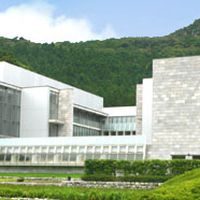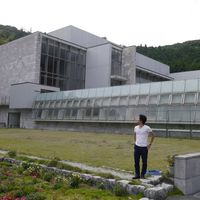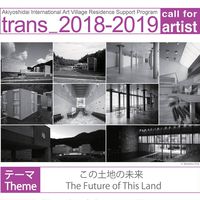Japan | Akiyoshidai International Art Village | residency call 2012-13

Open call for the Akiyoshidai International Art Village Residence Support Program: trans_2012-2013: open to artists under 40 years old. Grants for travel, accommodation and production support for 4 selected international artists in 2013.
The prefix ‘trans’ means to go beyond, get across, cross, exchange, change and convert. The Residence Program provides a time and place for artists to experience new encounters and carry out experiments to guide their their future projects. Participating artists are expected to bring new ideas to the local culture and people while they, in turn, will hopefully acquire new perspectives through these fresh encounters. As a result of the residence program, the artists will convey their new experiences, gathered from the local lifestyle and our particular geographic situation, to their next destination. We hope that the residence program at Akiyoshidai International Art Village becomes a space for artists to go beyond cultural borders and expand their outlooks, exchange their unique understandings and establish relationships with fellow artists.
Residency period: 22 January - 12 March, 2013 [50 days]
Deadline: Applications must be received by 31 July, 2012
Akiyoshidai International Art Village, designed by the architect, Arata Isozaki, was founded in 1998 with the aim of providing a platform for artists in residence as well as for a variety of art forms and cultural activities. AIAV’s main hall has a capacity of approximately 300 and its residence hall can house 100, and the village also features a restaurant, seminar room, studios, gallery, and café.
AIAV is located far away from the noise of everyday city life and is surrounded by natural resources. Isozaki himself referred to it as an “archipelago”, (an expanse of water with many scattered islands), and it consists of many different facilities. The term ‘village’ suggests that AIAV is not a one monolithic structure but rather a collective of small neighboring buildings reminiscent of a traditional Japanese village.
Similar content
deadline
31 Jul 2013
deadline
01 Aug 2011
deadline
31 Jul 2015
deadline
31 Jul 2014
deadline
31 Jul 2018
deadline
20 Jan 2022






